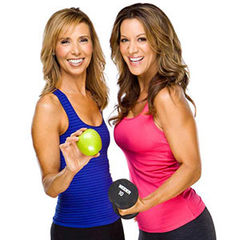Have you ever been told to eat “nutrient-rich” or “nutrient-dense” foods? Or to stay away from foods that have “empty calories”? When terms like these are thrown around, it’s easy to get confused. It’s time to accurately describe the concepts of nutrient density and caloric density and what roles they play in a well-balanced diet.
Food is the primary source of energy for the body. Nutrients found in food are essential for building and repairing body tissues and for regulating body processes such as digestion, energy production and muscle contraction.
The human body NEEDS both nutrients and calories. Factors such as age, gender, height, physical activity and metabolic rate, as well as injury, illness and pregnancy determine exactly how much of each nutrient is required. Standards have been developed to specify the nutrient levels considered to be adequate to meet the nutrient needs of practically all healthy people. These standards are called the Dietary Reference Intakes (DRI) or Daily Values. Ideally, the best way to ensure that you are meeting the DRI for essential nutrients is to consume a well-balanced diet. Because both nutrients and calories vary among individuals, there is no such thing as a one-size-fits-all diet plan.
Calories
Calories are a numerical value for how much energy a food can provide. Higher-calorie foods provide more energy, while lower-calorie foods provide less energy. Calories in a given food are calculated based on the amount of carbohydrates, fat, protein and alcohol it contains. Foods such as fat, oil, sugar and processed foods generally contain more calories, whereas fruits, vegetables, whole grains, and legumes tend to have fewer calories.
Caloric Density
A more important concept is that of caloric density, which takes into consideration the weight of a food. Foods that contain a lot of calories per pound are considered to be calorically dense. Those with fewer calories per pound are not. Some foods that are calorically dense are considered healthy, such as nuts and avocado, while others, such as sugar and friend foods, can have a negative impact on health and weight.
|
FOOD |
CALORIES PER POUND |
|
Vegetables |
65-195 |
|
Fresh fruit |
135-420 |
|
Nonfat dairy |
180-450 |
|
Whole grains |
280-650 |
|
Legumes |
400-750 |
|
Seafood, lean poultry, lean red meat |
400-870 |
|
Dried fruit, jams, white refined grain products |
1200-1400 |
|
Nuts |
2500-3000 |
|
Fats, oil |
3200-4010 |
Research has shown that people can eat freely from foods that contain fewer than 300 calories per pound and it will not impact their weight. Foods that contain 300 to 800 calories per pound can also be consumed with little impact on weight as long as activity level is normal. Foods with a caloric density that is greater than 800 calories per pound should be limited as they will likely lead to weight gain.
Nutrient Density
Caloric density doesn’t tell the whole story. You also have to look at the nutrients that a food contains. As in the earlier example, calorically dense nuts contain important nutrients and thus are considered nutrient dense (a good thing). But a calorically dense bagel or muffin lacks nutrients and is considered to be nutrient-poor or a source of empty calories.
The goal is to consume a diet that is filled with nutrient-dense foods, such as vegetables, fruit, dairy, whole grains, legumes, nuts, seeds and lean protein (fish, chicken, beef). These food range in caloric density (vegetables-low, nuts-high), but for the most part are on the lower end of the range. These foods are high in water and/or fiber, which make them more satisfying to consume.
Sugar, alcohol and high-fat foods such as French fries and pastries are calorically dense, but nutrient-poor. Foods that fall into these categories have little-to-no fiber, vitamins, minerals or antioxidants. They contribute calories, but little else. Unfortunately, most of these foods promote inflammation and are associated with an increased risk of obesity, high blood pressure, heart disease, diabetes and stroke.
A Well-balanced Diet
So, what does a well-balanced diet look like? As Michael Pollen summed it up in his best-selling book, In Defense of Food: An Eater’s Manifesto: “Eat food. Not too much. Mostly plants.”
Follow these guidelines to consume a nutrient-dense diet:
- Choose real food over processed food.
- Aim to cover at least half of your plate with plants (vegetables, fruit, whole grains, beans, nuts, and seeds).
- The rest of your plate should include a lean and clean protein (plant or animal) and a healthy source of fat.
At any stage of life, following this type of diet will help you achieve your health and weight goals.




 by
by 







 by
by